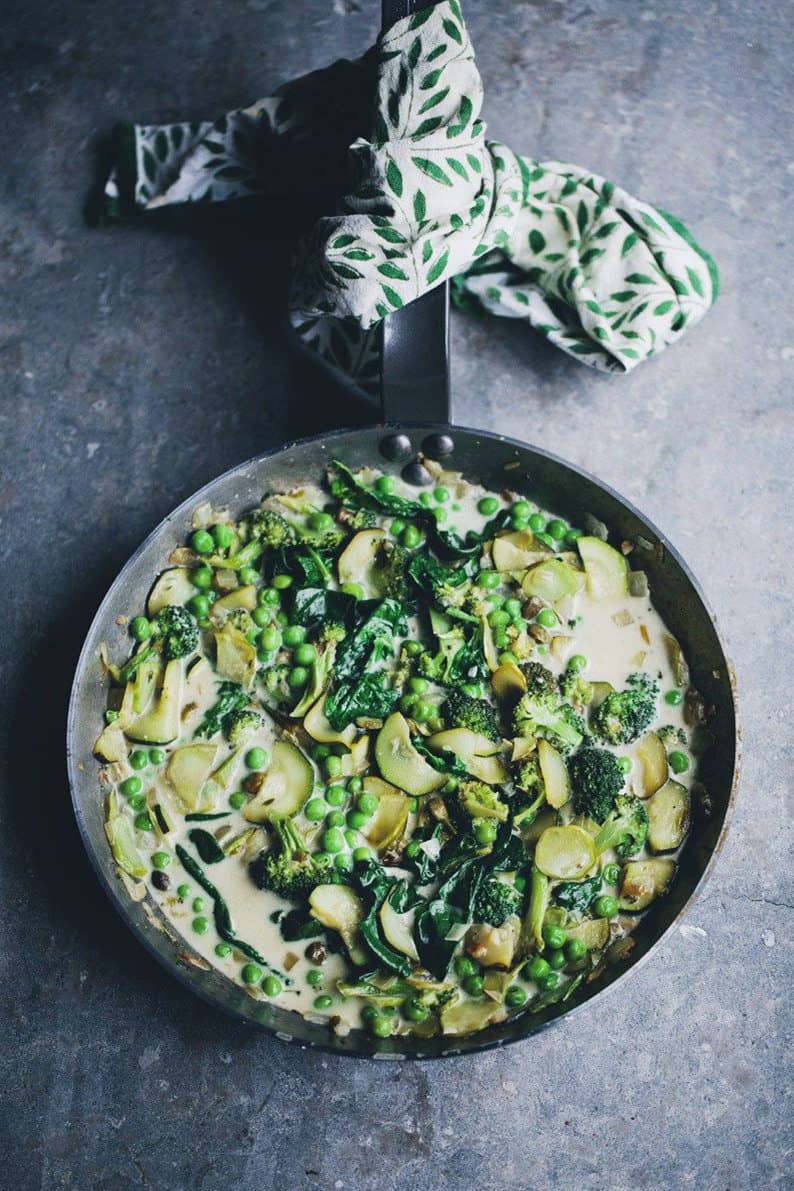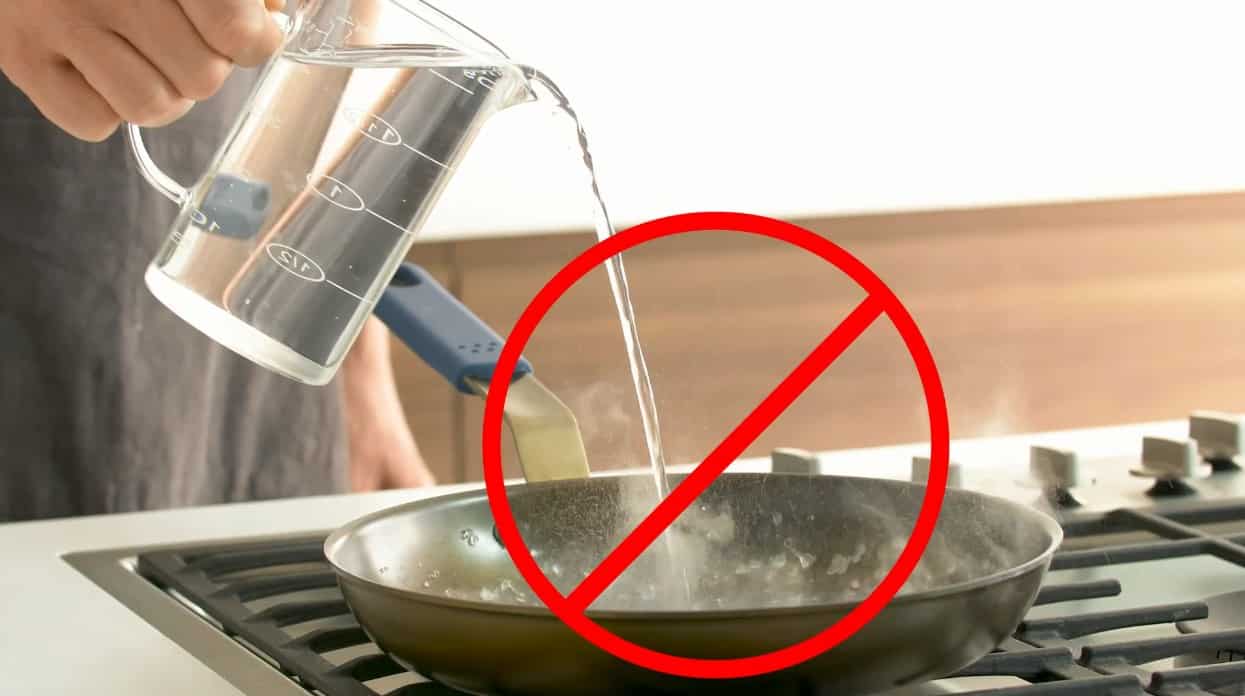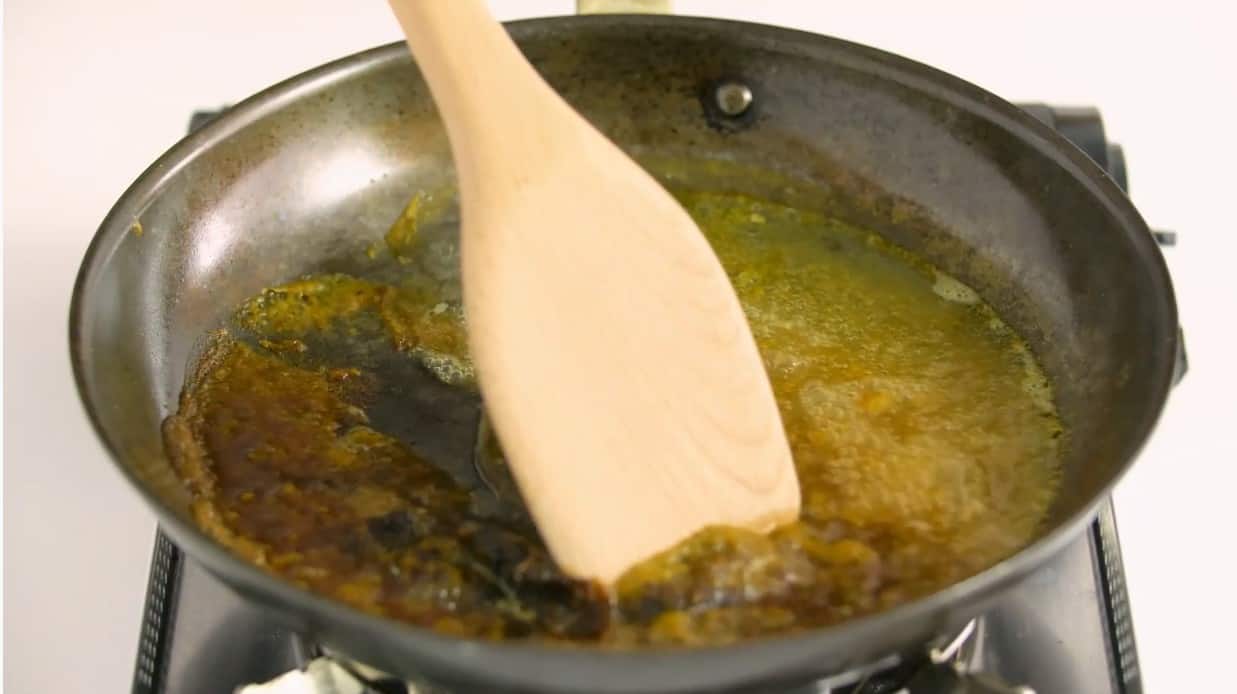
Carbon steel pans are good heat conductors, lightweight and versatile. They are made with iron and carbon in different quantities. Both private and commercial kitchens swear by carbon steel pans. Due to their versatility and non-stick properties, they are the workhorses of most kitchens. However, you need to clean your carbon steel pans properly to preserve them.
This article will cover
- Why Do Most People Use Carbon Steel Pans
- 4 Steps To Clean Carbon Steel Pans
- 5 Tips For Maintaining Carbon Steel Pans
- How to Restore a Rusty Carbon Steel Pan

Why Do Most People Use Carbon Steel Pans
Carbon steel pans are slicker than stainless steel pans. You’ll find them in many kitchens because they are excellent cookware choices. Here are some of the reasons why carbon steel pans are used by most people.
Non-stick
Compared to other steel pans, carbon steel pans are impressively non-stick, especially when properly seasoned. Seasoning prevents carbon steel pans from rusting and protects the non-stick coating on their cooking surfaces.
Even though carbon steel pans are naturally non-stick, you need to season them throughout their lifespan if you want them to remain non-stick. However, acidic foods such as lemon juice strip off their seasoning, so you shouldn’t cook acidic foods in them.
Versatile

Another primary benefit of carbon steel pans is their versatility. You can use carbon steel pans for cooking different recipes. You can use them to sear meat or scrambled eggs. They are perfect for virtually every cooking method.
They are adaptable, whether on the grill, in the oven, or on the stove. Also, their versatility makes them compatible with different heat sources. They work perfectly on electric, gas, and induction cooktops. This allows you to switch them between other cooktops when need be.
Heat
Carbon steel pans conduct heat quickly due to their thin cooking surfaces. You don’t have to preheat them before you cook your food. Also, they can tolerate high temperatures. For instance, they can withstand heat up to 500°Fahrenheit. However, not all recipes require high heat when cooking with carbon steel pans. If you aren’t careful, you can burn your food.
Lightweight
One quality that makes carbon steel pans stand out from other steel pans is their lightweight nature. For instance, cast iron pans are usually heavy. As such, they can’t easily be maneuvered in the kitchen. [Carbon Steel Pan Vs Cast Iron Pan: Which Should You Buy?]
However, carbon steel pans aren’t heavy; they are lightweight and easy to handle. You can carry them around in the kitchen without exerting much energy. Even though they are lighter and thinner, carbon steel pans are durable.

4 Steps To Clean Carbon Steel Pans
Cleaning your carbon steel pans the right way preserves their seasoning and protects them from germs. You can’t clean your carbon steel pans the way you clean other cookware. Each piece of cookware is made of different metals with different characteristics. Below are ways to clean your carbon steel pans.
1. Clean your pans after cooking

The best way to clean your carbon steel pans is to do so after cooking. However, allow the pans to cool before you put them in water. Drastic temperature changes cause the pans to warp and damage their efficiency.
2. Use soft cleaning agents

When cleaning your carbon steel pans, don’t use harsh cleaning agents. The non-stick properties of carbon steel pans make food easily slip off the cooking surfaces, so you don’t have to scrub the pans vigorously.
Use a mild sponge and soap to clean your carbon steel pans. If the pans’ surfaces are very greasy or have dry food residues, use a paper towel to wipe them off. This will make cleaning easier.
3. Use salt to remove burnt food residues

Usually, food isn’t expected to stick to your pans’ surfaces. However, the opposite happens in some cases. If you cook delicate foods on extremely high heat, the chances are high that such foods will burn.
You don’t have to scrub the cooking surface to remove these burns; salt or baking soda is more effective. After you are done cooking, put some salt or baking soda on the pan while it is still hot. Let it heat for some minutes. Remove the pan from the cooktop. Then, use a paper towel to wipe it off.
4. Oil the cooking surface

After cleaning your carbon steel pans, ensure you rinse and dry them thoroughly to prevent soap suds from coming in contact with your food. Once the pan is dry, put some drops of oil on a soft cloth and use the oiled cloth to wipe both the interior and exterior of the pan. This protects the non-stick coating and covers the pan from oxidizing.
5 Tips For Maintaining Carbon Steel Pans
To preserve your carbon steel pans, you need to do more than cleaning them. Some of the basic rules of maintenance to follow when using the pans include.
1. Don’t put the pans in a dishwasher if not recommended
Typically, carbon steel pans are not dishwasher safe. Usually, cleaning them in a dishwasher isn’t safe as it makes the pan retain moisture, which brings about rust. However, some manufacturers recommend that their pans are dishwasher-safe. For this reason, you have to follow the manufacturer’s instructions regarding cleaning your carbon steel pans in the dishwasher.
2. Season your steel pans
Most carbon steel pans have a beeswax coating when you buy them. This coating protects the pans’ properties. However, you have to remove it by soaking the pan in hot water or placing it on low heat.
After, you have to clean and season the pan before the first use. If you cook without seasoning your pan, it won’t have non-stick properties, and food may stick to the surface. Seasoning doesn’t stop with the first use; it should continue throughout the pan’s lifespan.
3. Store your pans properly
You have to store your carbon steel pans properly to maintain them. For instance, the more you expose the carbon steel pans to moisture, the more they form rust. As such, you have to store the pans in a dry, cool place. If you aren’t going to use the pans for a long time, season them before you store them. Ensure the bottom of one doesn’t scratch the surface of another.
4. Don’t soak your pans

This is a primary maintenance rule you should always keep in mind. Soaking a carbon steel pan is detrimental to the pan’s performance and causes rust. As much as possible, don’t expose your pan to moisture for long. There are other techniques you can use to remove burnt food.
5. Cook on low or medium heat
Carbon steel pans conduct heat quickly, so you don’t have to place them on high heat. Low or medium heat ensures that all parts of your food are evenly cooked. Excessive and prolonged high heat can degrade the seasoning layer over time, but it won’t cause the release of harmful toxins.
How to Restore a Rusty Carbon Steel Pan
Rust is a brown iron oxide that forms on iron or steel objects when exposed to air or moisture. The more rust builds up on your pans, the more difficult it becomes to remove.
As such, you need to remove rust quickly from your pans. Diligent cleaning and maintenance will prevent your carbon steel pans from rusting. However, all hope isn’t lost for rusty carbon steel pans. Here are ways you can restore your rusty carbon steel pans:
Always clean after cooking
First and foremost, prevent your carbon steel pans from rusting by cleaning them immediately after use. This not only makes your kitchen clean and organized; it also reduces the chances of food residues reacting on your pans’ cooking surfaces.
Also, always clean your pans with non-harsh agents. For instance, not all dishwashing liquids are safe to use. Some contain harsh chemicals that strip off your pans’ protective layer. Ensure such chemicals aren’t in your cleaning agents.
Remove the rust by salt-scrubbing or scouring or applying vinegar
You can restore your rusty carbon steel pans by using a mix of coarse salt or oil to scrub the affected areas on the pan. Use a soft cloth or paper towel and scrub in circular motions until you remove the rust.
Another way to remove the rust is to scour the affected areas with an abrasive scouring pad such as sandpaper, steel wool, etc. Ensure you thoroughly clean and rinse the pan after scouring. If the rust doesn’t go away after doing all these, you can mix water and vinegar and boil it. Then, scrub the pan with the hot mixture and soap.
Season after removing the rust

You must season the carbon steel pan after removing the rust. This is because the materials you used for removing the rust will strip off your pan’s seasoning. Therefore, you need to restore the seasoning. Besides, seasoning protects the pans’ non-stick cooking surface and prevents them from rusting.
Summary
Even though carbon steel pans have excellent qualities, you have to clean and maintain them properly to preserve those qualities and prevent rust. For instance, using harsh cleaning agents such as abrasive scouring pads, dangerous dishwashing liquids, etc., degrades your pans. Also, you can always restore a rusty carbon steel pan to its original state.
Pin Now, Revisit Anytime!


Michael Johnson is the founder of Pan Mastery, Inspired by his blacksmith grandfather’s legacy has a deep appreciation for hand-crafted pots and pans, he provides invaluable guides, reviews, and recipes to enhance your culinary journey.

